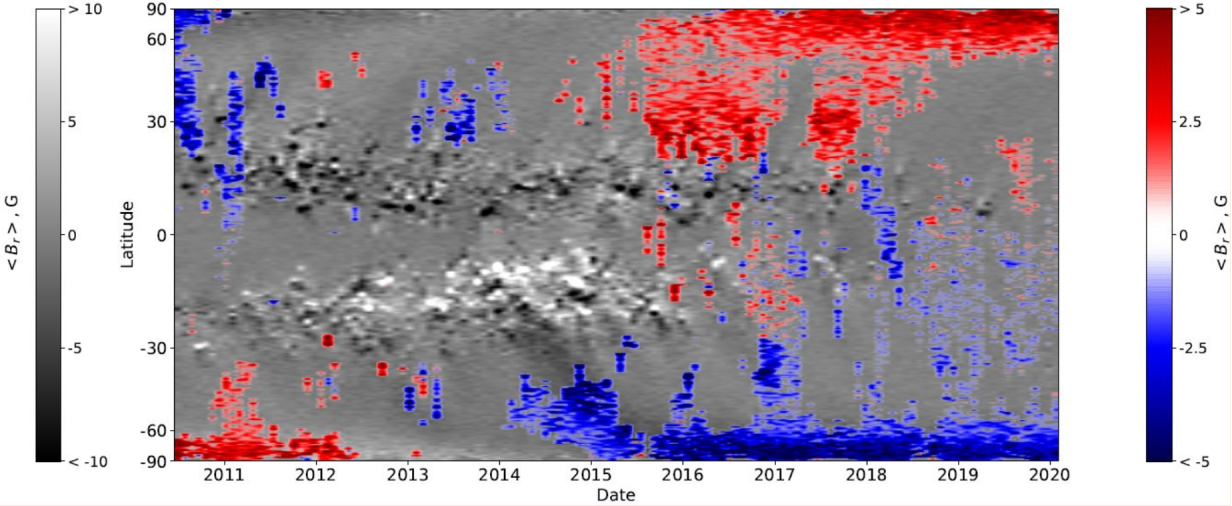Author: Egor Illarionov, Alexander Kosovichev, Andrey Tlatov
Jul 1, 2020

Identification of solar coronal holes (CHs) provides information both for operational space weather forecasting and long-term investigation of solar activity. Source data for the first problem are typically most recent solar disk observations, while for the second problem it is convenient to consider solar synoptic maps. Motivated by the idea that the concept of CHs should be similar for both cases we investigate universal models that can learn a CHs segmentation in disk images and reproduce the same segmentation in synoptic maps. We demonstrate that Convolutional Neural Networks (CNN) trained on daily disk images provide an accurate CHs segmentation in synoptic maps and their pole-centric projections. Using this approach we construct a catalog of synoptic maps for the period of 2010-20 based on SDO/AIA observations in the 193 Angstrom wavelength. The obtained CHs synoptic maps are compared with magnetic synoptic maps in the time-latitude and time-longitude diagrams. For example, Figure 1 shows time-latitude diagram of the longitudinally averaged magnetic field in CH regions (blue and reds colors) and magnetic field averaged over all longitudes (grayscale map).
The initial results demonstrate that while in some cases the CHs are associated with magnetic flux transport events there are other mechanisms contributing to the CHs formation and evolution. To stimulate further investigations the catalog of synoptic maps is published in open access on https://sun.njit.edu/coronal_holes and the source code for construction of synoptic maps and CHs segmentation is available in the GitHub repository https://github.com/observethesun/synoptic_maps.
Illarionov, E.; Kosovichev, A. & Tlatov, A. (2020), `Machine-learning approach to identification of coronal holes in solar disk images and synoptic maps', arXiv e-prints, arXiv:2006.08529.